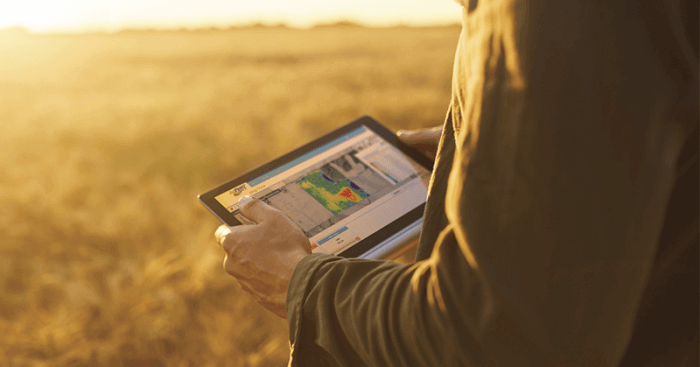With today’s Ag Leader tools, a farmer can document virtually every field operation and major crop performance metric, from planting to harvest and more.
It’s important to take actions from a targeted, one-step-at-a-time approach, according to Ag Leader’s Barry Anderson, a precision agriculture agronomist. The process he recommends starts with creating connections using a variety of precision ag technologies. This includes documenting the whole process from start to finish – everything from off-season planning to planting to in-season applications and harvest.
“And then at harvest, you can go back to see what you planted and where, where you sprayed and then compare that data to your yield monitor results in real time,” Anderson says. “It’s like you’re going to school throughout the crop year, then at harvest, seeing your report card and finding out how you did.”
One improvement at a time
While having connectivity between all the different parts of the process can help a farmer glean his or her ultimate return on investment (ROI), the process of accounting for all those data points during the year and using them as a catalyst for broad positive changes on an operation isn’t always that simple. That’s why Anderson says it’s important to think singularly when it comes to making adjustments. Doing so can enables the right changes in incremental steps that can lead to more operation-wide improvements.
“Think of one thing you want to try to improve upon. I would suggest looking at planting as that first focus,” Anderson says. “But, it starts at harvest. Make sure you’re already doing your harvest yield monitoring, and that your yield monitor is calibrated so the data is accurate. You need to get that report card first to figure out where you want to make changes so you can measure them the following year to see how they improved your grades.”
Determining which changes to make to improve upon this year’s crop takes both accounting for last year’s crop management and the new changes and improvements to make for next year. It’s a process that depends on the data and information collected at harvest.
Anderson says it’s important to prioritize potential changes and improvements for next year’s crop.
“What was your plan for this year, and what are the goals you want to accomplish next year? When I talk to growers, I always say I’m not asking them to make several changes, just one or two things,” Anderson says, adding that it starts by having confidence in the data being collected during harvest.
“If you have good quality data and information in the fall, it’s not as hard as many think,” Anderson says. “It’s about taking that data, stepping back and seeing the big picture. Harvest is a good time to do it, working with your agronomist or Ag Leader dealer, since they can make recommendations based on your data.”
Closing the loop with ROI
It’s best to take into account yield potential and also overall crop revenue when considering specific steps to improve yield. Some changes may cut costs but not increase yield. Don’t look for a silver bullet and expect huge results, Anderson recommends.
“It’s all about closing the loop by connecting everything you do to your overall ROI. Document activity and results, then think specifically about changes once you see your ‘report card,’” Anderson says. “In the end, not everything we do is going to create a 15- or 20-bushel yield increase. If I see that, it sends up a red flag for me immediately that there might be an error somewhere.”
To make good management decisions based on fall harvest results, it’s important to be confident that the data you collect is accurate. That’s where it pays to work with a trusted adviser who’s familiar with technology, capabilities, and desired outcomes.
If everything has been documented correctly, then agronomists have an easy button for making recommendations for the following crop year, Anderson says.
“We want to work with growers to make it easy for them to get reports back quickly and easily so they can focus on making decisions, not sit in front of a computer waiting for data. We can help create reports to give growers quick access to their data and information so they’re not overwhelmed and can make changes based on it,” Anderson says. “And with InCommand and AgFiniti, the farmer has the tools to make more instant decisions based on real-time data, if that is what they want. Ag Leader tools provide a lot of flexibility depending on the farmer’s needs and comfort level with their data and decision-making process.”

















